In this guide, you will learn how to fix any leaking ATV tire. This knowledge will more than likely come in handy sooner rather than later, and with just some simple tools, you will be able to handle most flats completely on your own.
Sometimes the leak is small, and the tire will gradually deflate over several days. This is usually not the type of leak you have to repair out in the field but can wait until you return to your garage.
Other times the leak happens abruptly and needs instant repair before you can continue riding. That’s why it can be a good idea to carry some means of fixing a tire in your onboard toolkit.
Page Contents
Before you can start repairing, you need to determine where your tire is leaking. There are 4 possible locations where the wheel can leak.
There are a couple of simple ways you can quickly locate the source of the leak.
If the size of the leak is of some significance, you should be able to hear where the leak is. As soon as you have determined the leak’s approximate location, move on to the next step.
You won’t be able to hear the smallest leaks, but don’t worry, they can’t hide!
If you spray some soapy water on the tire where you think it is leaking, the escaping air will create small bubbles on its way out of the tire.
And voila, you have found your leak. Just a few squirts of dish soap in the water is all you need.
If you are out in the woods, plain water will also work, but the bubbles will be a bit harder to spot. When you think you have found the leak, you can rub some spit on the location to be sure, as spit is a more effective “bubble make”r than plain water.
Some of the methods for fixing a leak that I will describe in this post will require removing the tire off the rim.
This may sound a bit intimidating if you never did it before, but fear not. This procedure is actually not as hard as it may seem, and it’s something most DIY mechanics should be able to achieve with no real issues.
But if you don’t feel comfortable doing this procedure, any tire shop will be able to do it for you.
Make sure you release all of the air out of the tire before you attempt breaking the bead. This is done either by pushing down the small valve pin until all air is out or if you don’t want to spend all day, get a valve-stem removal tool. They only cost a couple of dollars.
There are several ways you can go about doing this. We’ll go through a couple of good methods for those who rarely need to have this done and do not want to invest too much into equipment that will be standing unused most of the time anyway.
Your first option is to get a set of Beadpro spoons. They are cheap and quite easy to use, but they take quite a bit of time compared to other methods. Follow the instructions on the package closely.
Follow the instructions on the package closely.
Because of the small size of these tools, they would be a great addition to your onboard toolkit so that you can take off a tire even in the woods if needed.
The next option requires you to use a so-called bead-breaker. Additionally, you will need a couple of tire spoons and a valve-stem removal tool. You can get all of these tools at most automotive supply stores.
But buying a bead breaker is probably not the most fun way you can imagine spending the 100 dollars you should expect to pay for a decent one. Luckily, you can save most of this money if you are willing to use 15 minutes of your time on a little DIY project.
Two pieces of two by four and a couple of strong hinges give you a decent bead breaker in no time. Remember to cut the short piece of wood at about a 15-degree angle for better grip close to the rim.To do this, you need:

Start by spraying a generous amount of soapy water to the bead area of the rim. This will act as a lubricant. Without proper lubing, you will have difficulty seating the tire with the low pressure that ATV tires run.
Remove the valve stem core to allow air to be pumped inside the tire quickly. Then fill the air with the air chuck as normal. You will hear a small “popping” sound when the tire slips over the bead inside the rim, one for each side.
If your attempt fails, try strapping a ratchet strap around the outside of the tire. Tightening the strap will push the tire walls out against the beads, requiring less airflow for the tire to be seated successfully.
Using a ratchet strap when seating the tire will help to force the tire sidewalls outward.Then try again with the air chuck. Don’t go crazy putting too much air into the tire with the strap fitted. All you need is the tire to catch the bead and seat.
When the tire is seated, you can release the strap. Be careful; it is under a lot of pressure and will come undone with quite a bit of force.
Always make sure you don’t put too much air into the tire. As soon as you hear the 2 “pops,” the tire is beaded, and you should release the chuck from the valve. Install the valve stem core and fill the tire to the desired air pressure using a gauged tire inflator.
To get a tire seated, you will need about 15lbs (1 bar) of air pressure. ATV tires with stiff sidewalls will require up to 40lbs to seat properly.
Just make sure you never exceed your tire’s rated maximum capacity, as this may result in the tire tearing or the tire slipping over the rim’s lip. The force of a tire exploding like this can send you to the ER in no time, be cautious!
A leak in the tire itself is likely caused by a sharp object like a nail, screw, or thorn piercing the rubber, creating a hole where air can escape.
There are several ways you can go about fixing a puncture in the tire. Some are fast and easy but have disadvantages like not lasting so long or making a huge mess inside the tire.
A permanent fix requires some more work and equipment and cannot be performed as easily out in the woods.
This is my favorite method for fixing a punctured ATV tire as it does not require you to break the bead of the tire and can be done in a hurry and anywhere with very few tools. It is not perfect, but it is good enough.
This method does have the disadvantage of not completely sealing the tire cord, leaving it exposed to the elements so that it may rust over time. Rust will weaken the cord, and given enough time; the tire can explode because of this.
However, this problem is more relevant to car tires, where you ride at much higher speeds and operate with much higher tire pressure.
To do this, you need a tire plug kit. These kits are cheap, and you can get them at almost any automotive supply store.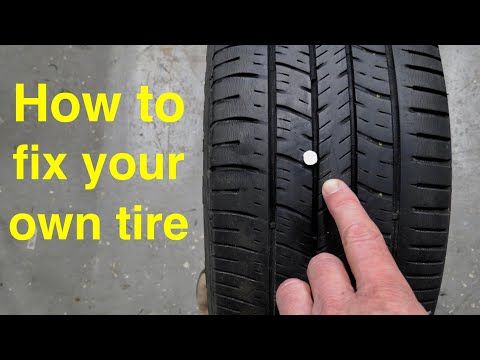
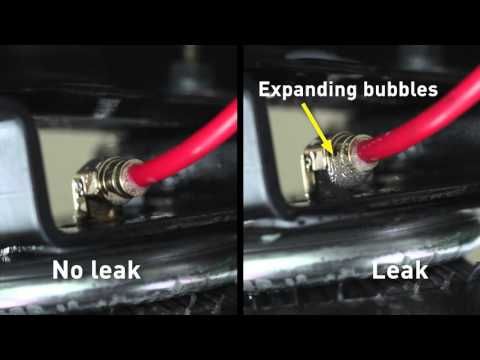 I like leaving about 1/4 inch sticking out as this will wear down over time anyway. Done!
I like leaving about 1/4 inch sticking out as this will wear down over time anyway. Done!This method is by many considered to be the proper way to patch a punctured tubeless tire.
You will need:
If your budget is really tight and you have plenty of time, you can even use some 120 grid sand-paper.

 If you apply the patch when the glue is still wet, it will not attach.
If you apply the patch when the glue is still wet, it will not attach. If the patch does come loose in some spots, you need to remove the patch and start all over.
If the patch does come loose in some spots, you need to remove the patch and start all over.If you wish, you can install a tire tube, even in a tubeless tire, and it will stop any leak.
However, this method is not ideal for ATVs.
If you puncture in the tube when on the trail, you will have a hard time fixing it on the go. And because of the rough terrain we sometimes ride on, ATV tires are quite prone to puncture. You may end up doing a lot of patching.
It’s best to have a setup that allows you to fix a leak easily out on the trails.
Also, the valve stem on a tubed tire tends to shift and tear when riding off-road with little air in the tires.
If you decide to install tubes in your tires, make sure you get tubes with tr6 valve stems that are purposely made for ATV use. These will not shift as easily as the tr6 that are more common on garden tractors and other small equipment.
This is the most common cause of why people get leaks in their ATV tires.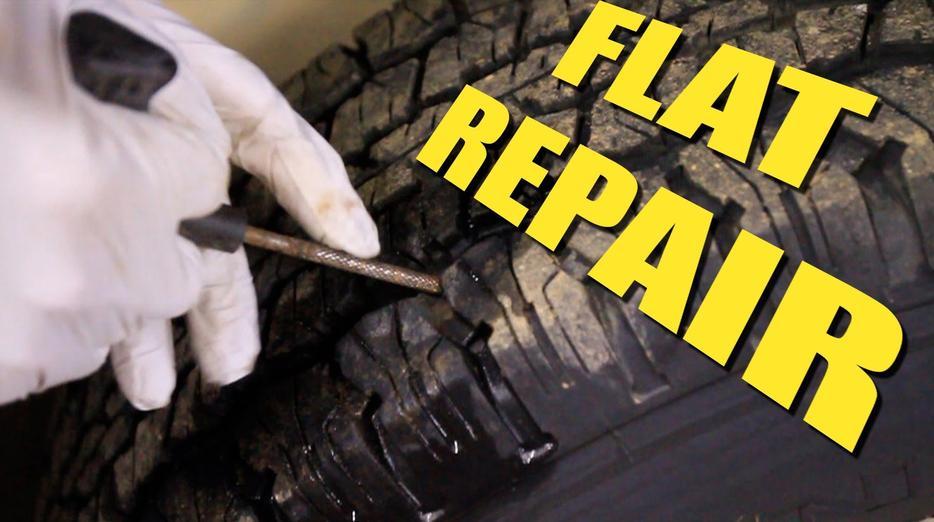
Because ATVs run at such low tire pressure, sand/silt from muddy water will migrate between the bead and rim, creating a leak. These kinds of leaks will not appear suddenly but worsen gradually over time as more dirt gets trapped.
To prevent this, it’s good practice to break the beads and clean thoroughly between the bed and the tire once a year.
But some tires will leak no matter how smooth and clean the bead is.
If the problem persists after you have cleaned the bead on the rim, you can try taking the tire off the rim once more. Before you refit the tire, you can apply some bead sealer or silicone to the bead and the inside of the rim’s lip.
Bead sealer can be bought in most automotive stores or a tire dealer.
Please do not put too much air into the tire before the bead sealer/ silicone has completely set, as it will push out the sealant.
This fix should prevent any dirt from getting in between the rim and the tire in the future.
This, of course, only applies to steel rims. Over time, water trapped between the tire and the rim, combined with dirt and sand, will make the rim start rusting.
The most permanent option to fix this is removing the tire and getting the rims sand-blasted and powder coated. This will make any rusted old rim look like new and should make a tight seal between the tire and the rim.
If you don’t wish to spend (almost) any money to get the leak fixed, you can try the following:

If all else fails, use green slime, or install a tube.
If you’ve hit a rock or, in other ways, damage the tire or rim where it seals, you may get a leak.
As long as the rim is fine structurally, you may be able to fix this by removing the tire from the rim and smoothing out any nicks with a Dremel tool or some fine sandpaper.
Apply a bead-sealer before you refit the tire if you want to be on the safe side.
If the air is leaking from the core, you can try removing it with a valve stem core removal tool, cleaning with soapy water, and replacing it. If this does not fix it, you can try replacing the valve stem core with a new one.
If the air escapes from the outside of the valve stem, it is likely bad or badly fitted. Valve stems are quite cheap, so your best option is to replace it if it starts leaking.
Valve stems are quite cheap, so your best option is to replace it if it starts leaking.
De-bead the tire from the rim and use a valve stem tool to pull out the old valve stem. Clean the area where the valve stem sits and spray with soapy water before inserting a new stem from the inside of the rim.
Again, pull out with the valve stem tool until the new stem pops into place. You will need a valve stem tool.
Related: How to Replace the Valve Stem on a Tubeless Tire
A cracked rim can sometimes be welded successfully with a TIG or MIG welder if the crack is not too big.
However, achieving a satisfying result requires some above-average welding skills. I recommend searching for a local specialist company to do this if you want to make sure you get a good result.
A small bend in the rim’s lip after hitting a rock may also make for a bad seal. Try gently tapping the bent part with a rubber mallet to straighten it out. Do not use a metal hammer as this may damage the rim further.
Do not use a metal hammer as this may damage the rim further.
Putting a product like green slime or similar inside the tire will likely fix any of the types of leaks listed in this post, except maybe a bad valve stem core or a ripped tire.
Keep in mind that the slime makes a bit of a mess that needs cleaning the next time you remove the tire from the rim. You will likely not become very popular at your local tire shop when you give them tires filled with slime that will get their tire machine all messed up.
But if you are willing to live with the mess, it is a cheap, easy, and quick option to fix almost any leak.
You also get the benefit that the slime will also instantly repair new leaks as soon as they occur.
Remove the valve stem core to release all air before putting the slime into the tire so the back pressure won’t create a mess.
Be aware that the slime can unbalance the tires, causing the bike to vibrate when riding.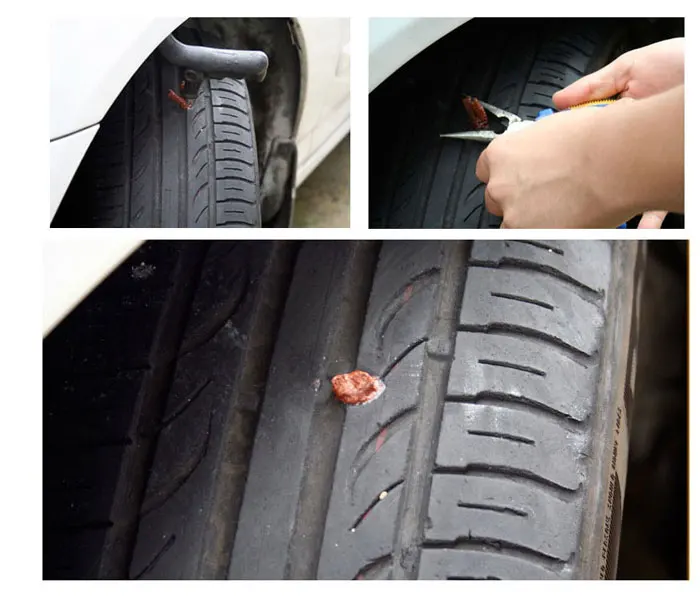 Make sure you go for a ride instantly after injecting the slime, and don’t use too much.
Make sure you go for a ride instantly after injecting the slime, and don’t use too much.
bad day image by Allyson Ricketts from Fotolia.com
By: Andrew Hazleton Updated April 12, 2017
All-terrain vehicles use relatively low tire pressures for added traction. Occasionally, even at this low pressure, ATV tires will develop slow leaks. A slowly leaking ATV tire may lose a pound or two of air over a period of weeks. You can repair these slow leaks either as a do-it-yourself project or by taking the tire to an ATV or tire-repair facility. The first step for the do-it-yourselfer, often the most difficult step, is to find the exact location of the leak.
Examine the tire tread and sidewalls for any indication of puncture, cracking or tread separation. You can patch a puncture to the tread; but you usually must replace tires with punctured or damaged sidewalls. If there is no visible damage to the tread or sidewalls, proceed to the next step.
Unscrew the valve stem cover and determine whether the valve stem is leaking. Spray a small amount of soapy water over the valve stem. If you see bubbles, the valve stem is leaking. If you do not see bubbles, skip to Step 4.
Use the pointed end of a valve stem tool to let the pressure out of the tire. Then insert the wrench end of the valve stem tool into the valve stem, and tighten the stem if loose. If the stem does not appear loose, remove the stem and replace it with a new one. Replacement valve stems are available at most auto parts and tire stores, and most tire stores will replace the stem for a nominal charge.
Spread a film of soapy water around both inner and outer beads. The bead is the sealant applied between the rim and tire when the tire is mounted. If you see bubbles at the bead, you have identified the leak. Occasionally this leak is caused by a small grain of sand or dirt having worked its way into the bead. Brush the area vigorously with a stiff-bristled brush and allow the tire to sit for a few minutes. Test again with soapy water. If the brush removes the sand or dirt from the bead, the tire may seal itself after the particle is removed. Deflating and reinflating the tire may assist in this resealing.
Test again with soapy water. If the brush removes the sand or dirt from the bead, the tire may seal itself after the particle is removed. Deflating and reinflating the tire may assist in this resealing.
If brushing does not fix the leaking bead, you may have a bent rim or damaged tire. Tire rim repairs are best performed by an experienced tire or ATV mechanic, as it is easy to destroy a rim through improper repairs. You need specialized tools to remove and remount an ATV tire; consider having an ATV or tire mechanic perform this task.
It can be difficult to find very slow leaks, and it may take several minutes to generate a single soap bubble. You can use shaving cream instead of soapy water; its higher density can make it easier to detect bubbles.
Valve stem leaks are among the most common problems with ATV tires.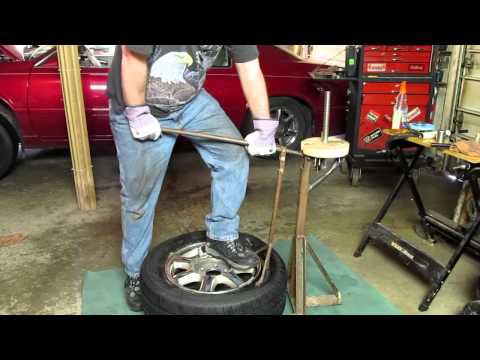 Always keep the valve stem cap screwed on to prevent dirt from entering the stem.
Always keep the valve stem cap screwed on to prevent dirt from entering the stem.
References
Resources
Tips
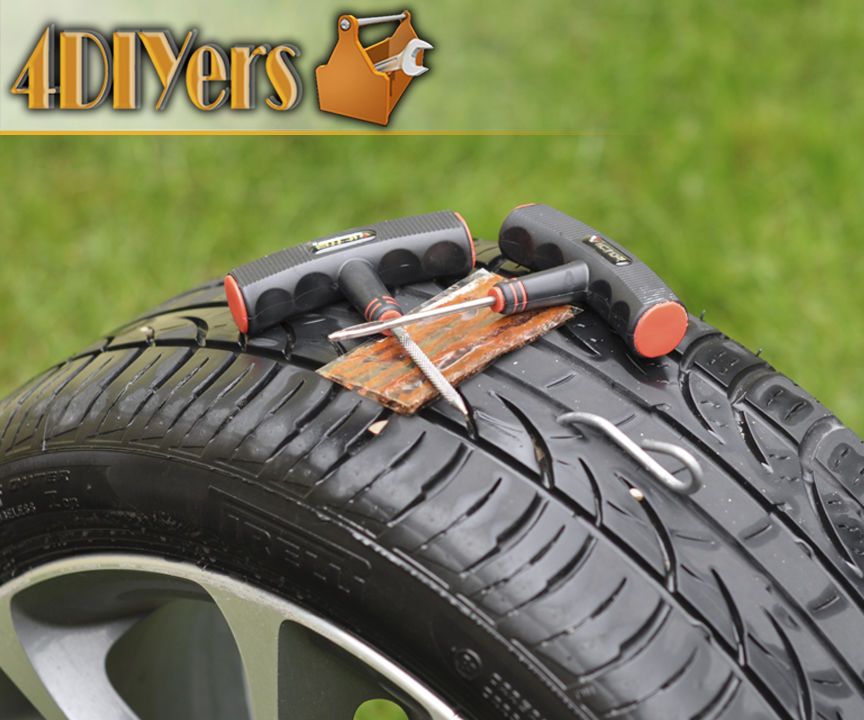 You can use shaving cream instead of soapy water; its higher density can make it easier to detect bubbles.
You can use shaving cream instead of soapy water; its higher density can make it easier to detect bubbles. Warnings
Writer Bio
Andrew Hazleton has been writing on a freelance basis for more than 20 years, and his work has appeared in national, regional and in-house publications. His work has appeared in "Sports Illustrated," "IEEE Spectrum," "Popular Photography" and several newspapers. Hazleton has a Bachelor of Science in engineering from Lehigh University and a master's degree in management from Pepperdine University.
Related Articles
ATVs are famous for their stability and reliability, however, even the highest quality models, including Stels ATVs, can fail. Of course, only a master can deal with serious breakdowns, but you can do something with your own hands, and some breakdowns will have to be repaired on your own, including punctured tires. This is one of the most common problems that ATV riders face, and it's not surprising, especially given that ATVs move on such surfaces, where there is no need to talk about safety. That is why you need to be ready in case of trouble to solve the problem. The main thing, as in many ways, is not to panic, so if you hear a suspicious hiss, don't be scared, but take out the first aid kit of your ATV. nine0003
Of course, only a master can deal with serious breakdowns, but you can do something with your own hands, and some breakdowns will have to be repaired on your own, including punctured tires. This is one of the most common problems that ATV riders face, and it's not surprising, especially given that ATVs move on such surfaces, where there is no need to talk about safety. That is why you need to be ready in case of trouble to solve the problem. The main thing, as in many ways, is not to panic, so if you hear a suspicious hiss, don't be scared, but take out the first aid kit of your ATV. nine0003
I must say right away that it is better to replace a damaged tire, but this is not always possible and can be done on the spot, and minor repairs will allow you to finish the trip and return home on your fours. In fact, there is nothing complicated about this, and it is quite possible to repair holes up to 5 centimeters in diameter, the rest are usually associated with damage to the device itself, so there is no need to talk about the end of the trip.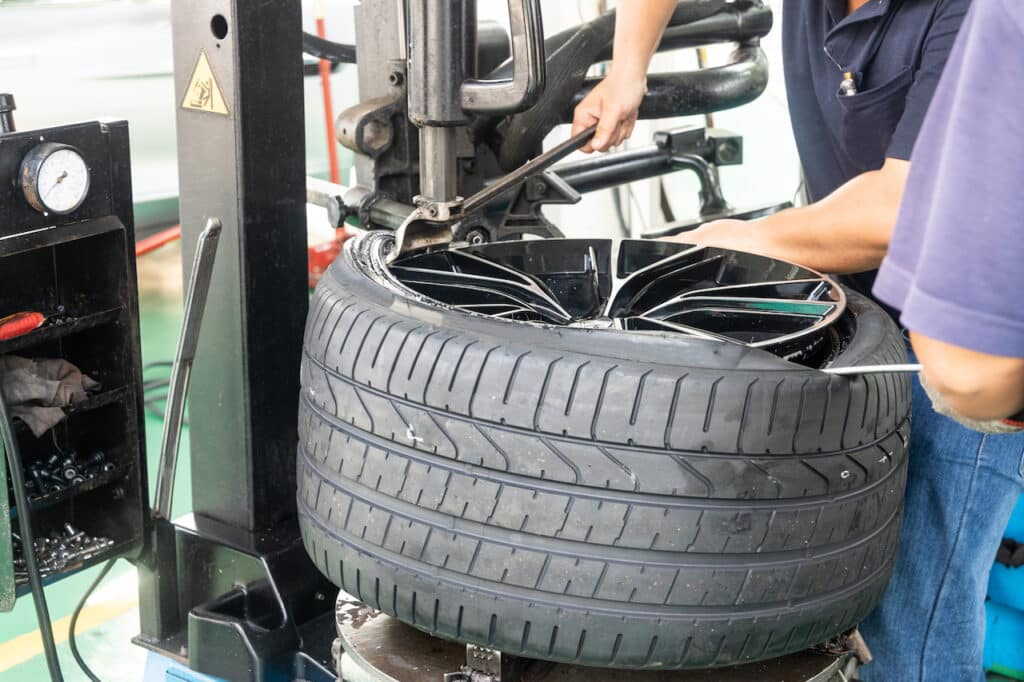
In order for the test not to take you by surprise, you need to prepare in advance and always have a few basic things with you. Designate storage space on your ATV ahead of time and remember to refill as you use it. Often in repairs, the main problem is precisely the need to get out of the ground what you forgot to take with you from home. So, here is a list of what will make you feel confident on any road - a repair kit, it includes a reamer - an expander and a special tool for installing patches. nine0003
Patches, this is exactly what ends quickly and that you need to constantly buy more, the rest of the materials are not consumables or you can do without them. Patches come in different shapes, for example, I prefer long ones, the main thing is their good stickiness.
Pump. After the “treatment”, the tire will have to be pumped up and you cannot do without a pump. Here the choice is yours, manual or electric, as for me, the simpler the better, folding pumps are still good, they take up less space in the trunk, although it's more about your personal preferences and the possibilities of your wallet.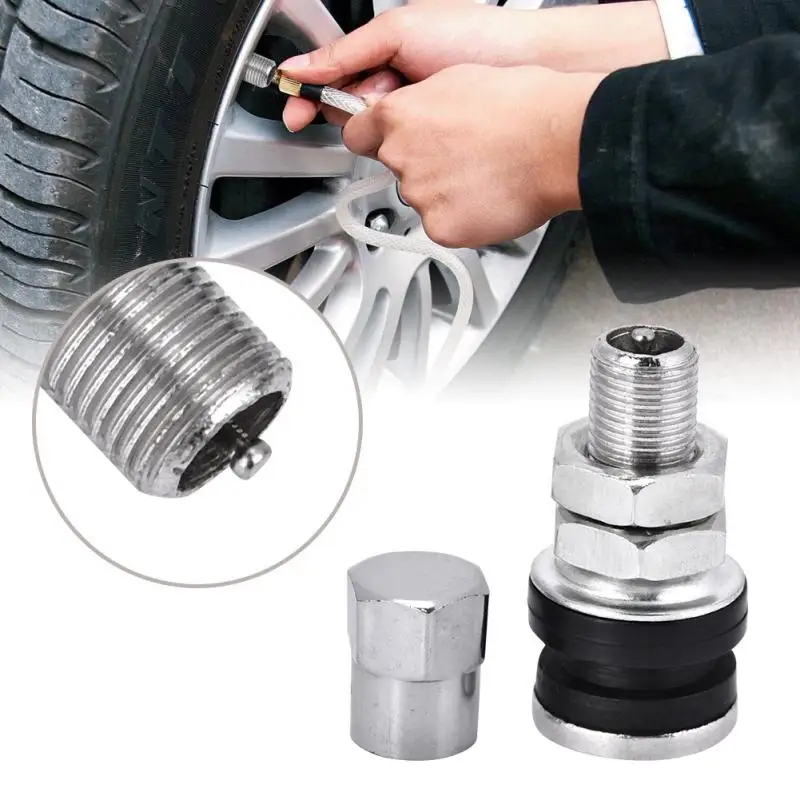 nine0003
nine0003
Rubber adhesive. In principle, there is usually enough sticky layer on the patches, but just in case I carry it in the trunk too, the whole gluing process is greatly simplified. A pressure gauge is a device for measuring tire pressure, if you bought an ATV in a store, it usually comes with an ATV.
If you notice an air leak, start by looking for a hole in the tire, if the tire is already deflated and the air is coming out weakly, inflate the tire and find where the air comes out. It is usually quite easy to find a hole if it is caused by a foreign object - a nail or a branch. If you don't see the hole, spin the tire on the wheel and listen for exactly where the hiss of the escaping air is heard. In the most extreme case, put the tire in water - a puddle or lake - and you will be able to see the air bubbles escaping. Remember that air can escape not only through a hole in the tire, but also through the junctions of the tire parts or the tire and the valve. nine0003
Once you find the hole, work the edges of the hole with a reamer, making the surface rough, after that the patch will better adhere to the rubber.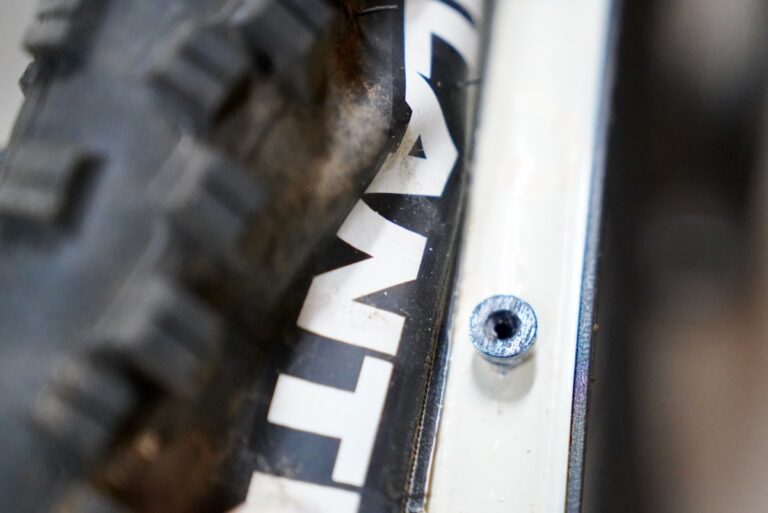 Take a patch tool and thread the patch into it, if there is glue, smear it with a little glue and insert it into the tire halfway. The next moment is very important - you need to quickly pull the tool out of the hole, but do not pull the patch with you. If you are doing this for the first time, you may need to practice - I told you that patches run out quickly. Usually, if the hole is microscopic, one patch is enough, but sometimes you have to use several, in this case, repeat the steps, inserting the patches until the air stops coming out of the hole. When the hiss is no longer heard, leave the tire for a few minutes to allow the glue to dry. Do not forget to trim the ends of the patches protruding from the operation site, leave no more than three millimeters, otherwise such a patch may simply fall out while driving. When everything is ready and your tire has restored its integrity, pump it up to the required pressure and you can continue driving. Do not forget that if the hole was large enough, after returning home, the tire will have to be changed to a new one.
Take a patch tool and thread the patch into it, if there is glue, smear it with a little glue and insert it into the tire halfway. The next moment is very important - you need to quickly pull the tool out of the hole, but do not pull the patch with you. If you are doing this for the first time, you may need to practice - I told you that patches run out quickly. Usually, if the hole is microscopic, one patch is enough, but sometimes you have to use several, in this case, repeat the steps, inserting the patches until the air stops coming out of the hole. When the hiss is no longer heard, leave the tire for a few minutes to allow the glue to dry. Do not forget to trim the ends of the patches protruding from the operation site, leave no more than three millimeters, otherwise such a patch may simply fall out while driving. When everything is ready and your tire has restored its integrity, pump it up to the required pressure and you can continue driving. Do not forget that if the hole was large enough, after returning home, the tire will have to be changed to a new one. nine0003
nine0003
As you can see, everything is not so difficult and you will quickly learn how to spend no more than a few minutes on repairs, by the way, if you don’t want to practice repairing a tire in the middle of a track or forest, do it at home, especially if you have never used a repair kit before.
August 31, 2017 nine0003
ATV - excellent technique, but every ATV rider must know the simplest steps to repair his "beast". These activities include tire puncture repair .
ATV tires are different from car tires. Low pressure quad tires which increases the chance to puncture or cut the tire. Every ATV rider should have a puncture repair kit. nine0024 ATV punctures are the norm rather than an emergency. And without tire repair experience, riding an ATV is very difficult.
When leaks are noticed, stop and start looking for a puncture. It is most convenient to look for a puncture by first removing the wheel, but the first stage can be carried out by dismantling the wheel.
If you are unable to locate the puncture, then you must remove the wheel and lower it into water, such as a puddle, lake, river. If the wheel is already heavily deflated, and the air is no longer coming out, then you need to pump it up and perform the described actions. nine0003
In the water you will immediately understand where exactly the air is coming from
